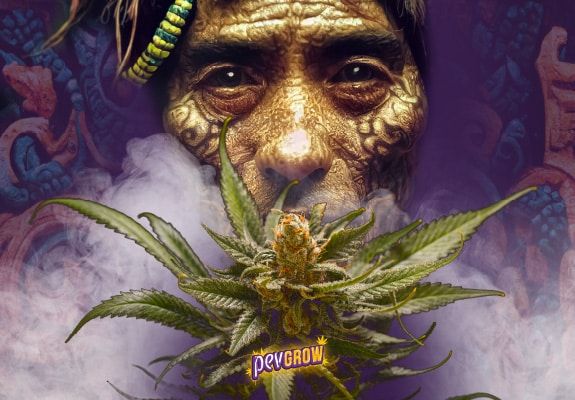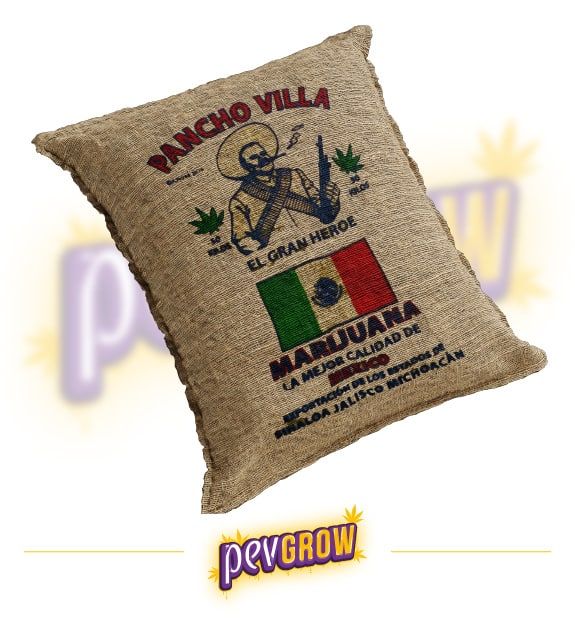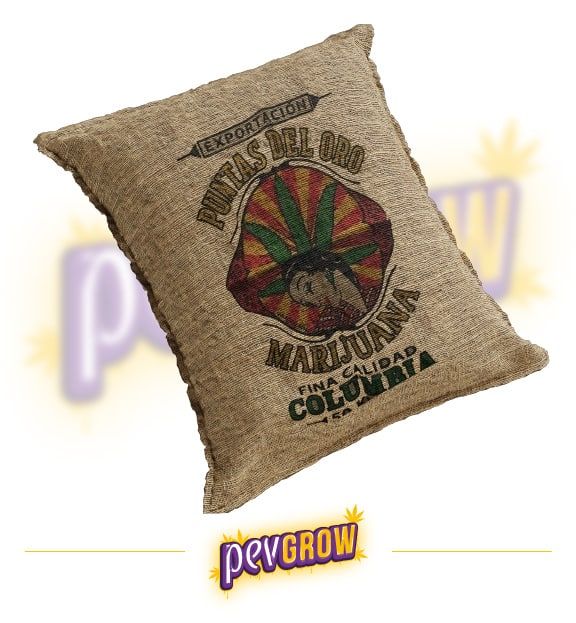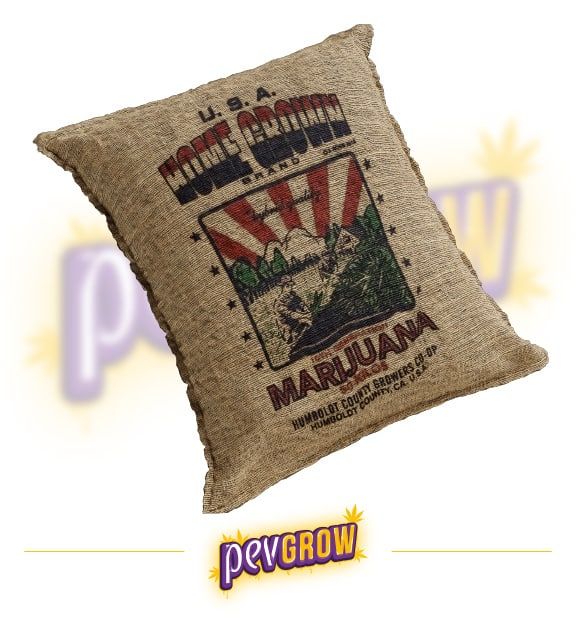

23-12-2022 09:00:39 - Updated: 23 December, 2022
Sinsemilla marijuana revolutionized the cannabis market many years ago, since until then the quality left much to be desired, but since then the amount of resin it produces and its potency have not stopped increasing, the aromas are more defined, the flavor it’s much more intense, and overall it’s much better in every way. In this article we are going to review the history of Sinsemilla cannabis, where and how it came about, the method, the classic varieties and many other things, sit back and I hope you enjoy reading.
⚠️ What does Sinsemilla mean?
The definition of Sinsemilla is explained by the term itself, since it is a word composed of “lees” and “seed” and the sense of Sinsemilla refers to marijuana harvested without pollination, that is, buds that do not contain seeds (Sinsemilla). Sinsemilla plants are females that are grown away from the males so that their pollen does not reach their flowers. In this way, their calyxes get fatter and produce more trichomes, because their natural mission is to produce seeds that can continue the lineage.
As a general rule, these buds also contain more essential oils, because terpenes and other aromatic compounds have the function of attracting pollinating insects, and since there is no pollen nearby, females try to smell stronger so that their attractive aroma reaches further. Before the invention of this technique, the buds of the females were harvested full of seeds, and in addition to being less productive in general, their organoleptic properties were worse and their effect much less powerful.
At the time, other terms that also referred to Sinsemilla herb became popular, such as “Sinsemilla”, “Sinsemilla” or directly “sensi”, and this type of cannabis became so popular and in demand that some companies in the sector took these names as trademarks. own, see the case of Sensi Seeds for example.

👾 Who invented Sinsemilla marijuana?
Supposedly the origin of the Sinsemilla is in Mexico, probably in Michoacán but it is possible that this technique was also used in other states of this country. According to High Times magazine, it was a young American named David Wheeler who traveled to the Mexican jungle in 1961 after seeing a photo in a publication showing an exuberant marijuana crop with the most spectacular buds he had ever seen in his life. So who created the Sinsemilla?
It is very possible that this method began to be used by the Nahuatl Indians many years before its discovery by the rest of the world, and it is even possible that it was also done in other parts of the world, but it really began to become popular after David Wheeler introduced it to the United States. From that moment on, California Sinsemilla marijuana began to be considered the best in the world, something that still continues today, although at that time it was grown more in the south of this state, and today it is Sinsemilla marijuana from northern California the most demanded, especially that of the famous emerald triangle.
🧐 How to grow Sinsemilla?
A good Sinsemilla gardener has to sow female marijuana seeds that are sexually stable, that is, there are no males or hermaphrodites that can pollinate the buds of the females. In this case, feminized seeds of stable genetics may be ideal, but it is also possible to grow regular seeds and be careful to remove the males that come out. Sinsemilla gardens have to be places with good conditions for the cultivation of plants, which receive enough light but maintain adequate temperature and humidity. It can be indoors or outdoors, but in indoor cultivation it is easier to keep the parameters stable, keep that in mind.
The Sinsemilla cultivation technique is based on cultivating female marijuana plants in the best possible way to be harvested without pollination and thus have large, tight, resin-laden, tasty and powerful buds. To achieve this, you have to give the plants what they need at all times and avoid stressful situations, for this it is best to plant in an aerated but nutrient-rich substrate, add a root stimulator during the first weeks of life, a good stimulator flowering during the first weeks of this phase, and a fattening of buds later. This is the basics so that the plants have everything they need for their perfect development and generate Sinsemilla buds, but it is still vital to be careful during the pre-flowering phase to eliminate all the plants that are not 100% female, and above all to treat that the plants are not stressed at any time.
Sinsemilla Tips
- Respect the dry cycle between irrigation and irrigation
- Do not abuse with fertilizers
- Make sure the plants have total darkness during the night phase.
- Maintain the temperature and humidity in correct parameters
- Beware of massive pruning
- Do not damage the roots during transplants
- Apply phytosanitary preventive
🎯 Sinsemilla varieties
Currently, the vast majority of crops are Sinsemilla marijuana varieties, but when this practice began to spread, there were only a few Sinsemilla varieties available, and some of them became classics over the years, here you can see some of them:
Mexican Sinsemilla:
It was the first Sinsemilla marijuana to be exported to the USA, as we have seen before, and the impact it caused on these consumers was such that its fame spread like wildfire and demand multiplied in a short time. At that time, the brotherhood of eternal love and other organizations began to import massively from different parts of Mexico, at the same time that this cultivation technique began to be used in Californi.

Red Hair Sinsemilla:
Named for its beautiful reddish pistils, it is an autochthonous variety supposedly from Michoacán, although there are people who affirm that it could be from the state of Guerrero or even from Oaxaca. What is clear is that it came from the jungles of the Mexican southwest and it was a pure sativa. This weed changed the game because up to that time the one consumed in the USA was generally quite weak and tasteless, but Red Hair Sinsemilla had an impressive psychoactive effect, which is why many growers began to use these seeds.

Oaxacan Sinsemilla:
The Highland Oaxaca Gold variety is considered one of the best landraces on the entire planet, especially for its cheerful and motivating effect. It was possibly the most exported Mexican Sinsemilla marijuana during the 1960s, and as happened with other pure strains of the time, this genetics began to be crossed with other landraces to develop hybrids such as Original Haze or Skunk among others.

Colombian Sinsemilla:
For many people, it became their favorite Sinsemilla marijuana, to the point of sweeping some of the first harvest festivals, which were the origin of current cannabis competitions. Classic sativa varieties such as Colombian Black, Red Punto, Mango Biche, Corinto, and especially the legendary Santa Marta Colombian Gold, which was one of the most exported Sinsemilla cannabis strains to North America, were grown in Colombia.

Jamaican Sinsemilla:
The Sinsemilla method spread throughout southern Mexico, passing through Guatemala to Panama, Colombia and later to the Caribbean. Weed had been grown in Jamaica for a long time, but when they learned about the Sinsemilla technique they began to use it and export marijuana to the USA. Until then, consumers in the United States were used to Mexican weed, and when they tried the effect of Jamaican sativas, they were surprised by its potency.

California Sinsemilla:
Surely the most famous Sinsemilla weed of the day was Red Hair once it began to be cultivated in California, but that was only the beginning of a fad that continues to this day. Once it was discovered that the hybrids were more flavorful and potent than the pure varieties from which they came, strains like Skunk #1 became the most consumed and from then on they stopped consuming the classic Sinsemilla.

🚀 Sinsemilla marijuana seeds for sale
We have been asked hundreds of times if we have Sinsemilla seeds for sale, and as you may have seen in this article, the term “Sinsemilla” does not refer to a specific type of variety, but to a cultivation method where only the seeds are left females so that they produce unpollinated buds, that is, without seeds. If you do not have much growing experience, I recommend buying feminized marijuana seeds so that there is less risk of being pollinated, but if you already know how to distinguish males from females, you can also grow regular seeds, but remember to pay attention during the pre-flowering phase to remove all males and hermaphrodites from the culture.
✨ Conclusion
The discovery of Sinsemilla marijuana revolutionized the cannabis market because until then consumers had to remove the seeds from the buds before smoking them, or they smoked the seeds directly, which implies, since they have a disgusting taste. Today we have seen what the term “Sinsemilla” means, what this technique consists of, who invented it, and the best Sinsemilla marijuana varieties of all time.
⭐ Frequent questions
Why is Sinsemilla marijuana better?
When the female cannabis flowers are pollinated, the plants spend a good part of their energy producing and maturing the seeds, instead of using it to fatten the buds and other things. Sinsemilla weed tends to contain more resin, cannabinoids and terpenes, because it produces these compounds with the intention of attracting pollinating insects.
How potent is Sinsemilla?
To give you an idea, it is said that in those years most of the weed consumed in the USA had a maximum of 5% THC, but the Sinsemilla marijuana that began to arrive could exceed a 15% concentration of this cannabinoid, so it could be said that it was 3 times more powerful. Keep in mind that just as Sinsemilla cannabis produces more essential oils, it also produces more THC and other cannabinoids, making it much more potent than seeded buds.
Is all marijuana Sinsemilla?
No, currently the vast majority of marijuana grown in the world is Sinsemilla, but not all. In some places in South America, such as Paraguay, pure varieties are still grown without removing the male plants, which are then sold as brick-pressed marijuana. Something similar happens in other continents, in Asia seeded grass is still found in Nepal, India, Thailand and other countries, and in Africa it also happens in Senegal, Congo, South Africa or Malawi. In Morocco, the males are not usually removed either, but in this case nothing happens because all the marijuana is processed to produce hashish, so the seeds are not a problem.





